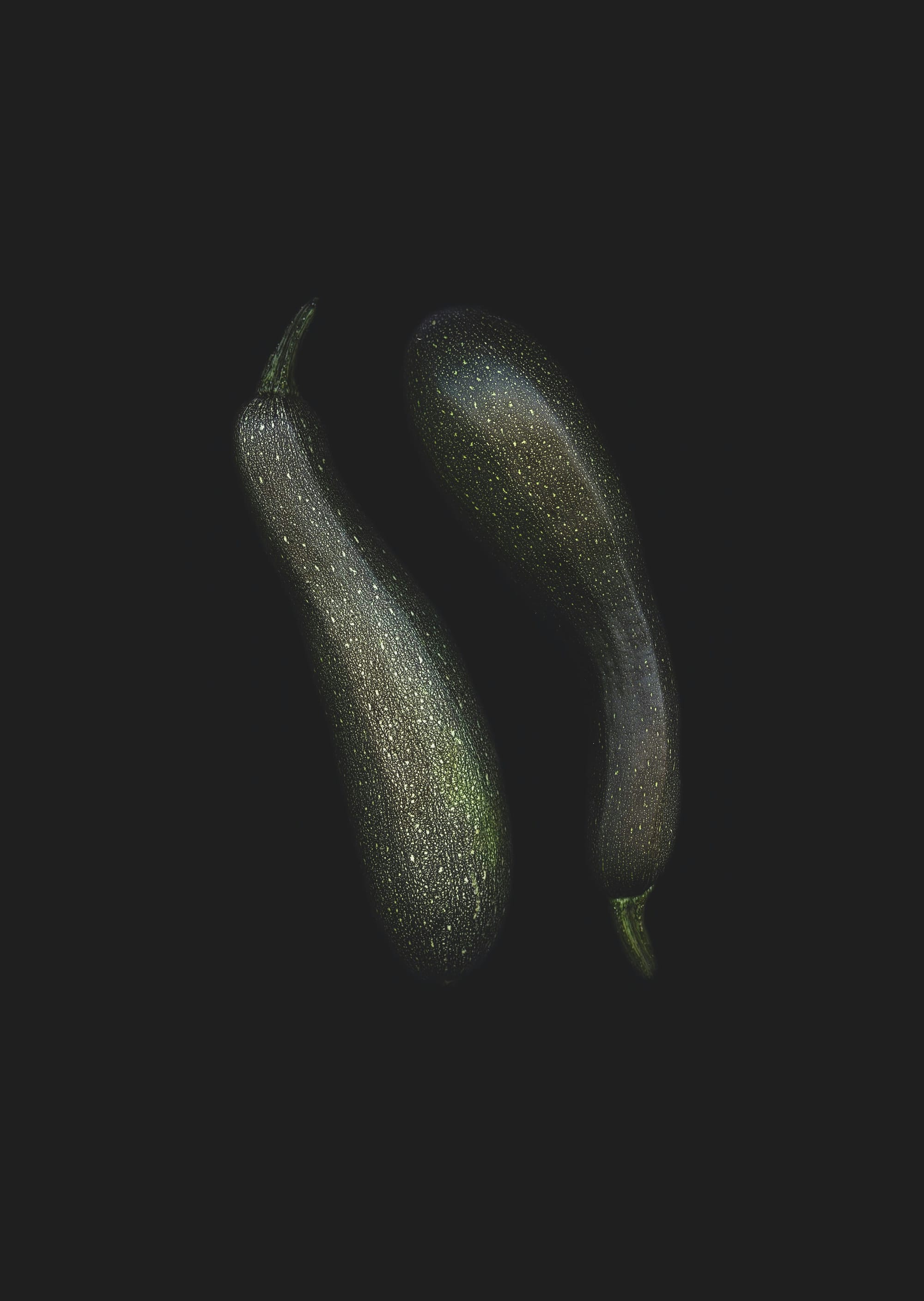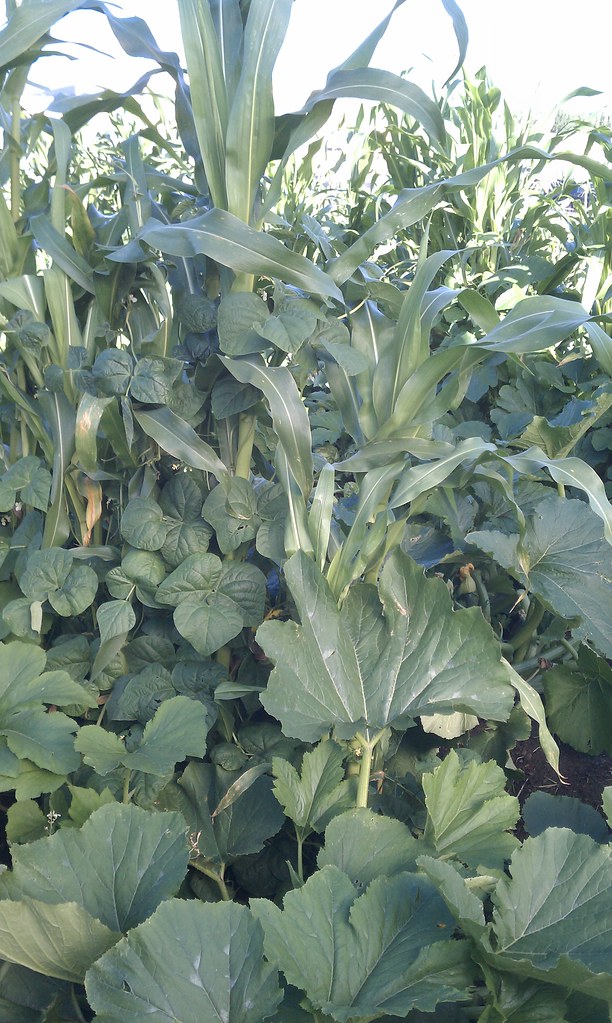Zucchini and Summer Squash
From Garden Surplus to Culinary Star

If you’ve ever had a garden (or been the lucky recipient of a gardener’s bounty), you know the zucchini story well. I was that person in my first garden who had no idea how many zucchini plants to grow. I planted way too many, and before long, I was schlepping baskets of zucchinis around the neighborhood like I was Santa Claus handing out presents. Eventually, folks started crossing the street to avoid me—yes, it was that much zucchini!
But zucchini has earned its place in gardens, kitchens, and hearts everywhere. These versatile squashes are easy to grow, delicious, and packed with nutritional value. Plus, they’re incredibly easy on digestion—a bonus for many of us.

From Raw to Baked: How to Enjoy Zucchini
Zucchini is one of those rare vegetables that shines at every stage of growth. When they’re small, they’re perfect for eating raw. Crunchy, fresh, and subtly sweet, small zucchinis make a great snack or addition to salads.
Medium-sized zucchinis are best cooked by grilling, sautéing, steaming, or baking. Their texture softens, and they soak up flavors beautifully.
Once they get large and a bit tougher, you don’t have to toss them. Instead, get creative and use them in baked goods like cakes, muffins, or even breads. Large zucchinis lend moisture and nutrition to sweet treats, so no waste here.
And don’t forget the blossoms that appear on the young zucchinis. Those are edible too, and fun in salads or as edible dish garnishes.
Try:
- Raw, sliced thin or spiralized in salads
- Sautéed with garlic and herbs as a side dish
- Spiralized as a pasta alternative with your favorite sauce
- Baked or grilled, seasoned simply or in medleys
- In vegan cakes, muffins, or breads to add moisture and nutrition
- Tossed in soups or stews as a thickener or hearty addition

More Than Just Green: Yellow and Heirloom Varieties
You might be familiar with the classic green zucchini, but don’t overlook yellow summer squash and heirloom varieties. Yellow squash offers a slightly sweeter flavor and makes your plate pop with color.
When most people say "zucchini," they’re thinking of the typical dark green kind (often a hybrid like 'Black Beauty'). But zucchini comes in a rainbow of varieties—each with its flavor nuances, textures, and appeal:
- Golden zucchini: These yellow-skinned varieties are slightly sweeter and just as versatile as green ones. They’re great raw or grilled, and their color pops in stir-fries and salads.
- Striped zucchini: Look for heirlooms like 'Costata Romanesco'—an Italian variety with light and dark green ridges and a slightly nutty, rich flavor. It holds texture better than modern hybrids and is prized by chefs.
- Round zucchini: These globe-shaped squashes (like 'Ronde de Nice') are perfect for stuffing and roasting. They tend to have a creamy interior and thin, tender skin.
- Tatuma squash: Often found in Latin American cooking, these pale green, oval-shaped zucchinis have a denser texture and are well-suited for soups or stews.
- Eight-ball zucchini: A round, almost comically squat version that’s fantastic for stuffing or grilling whole. These were all the rage a few years back.

Spiralize Your Way to Easy, Healthy Meals
Zucchini is a staple in raw food diets for good reason—it’s crisp, neutral, hydrating, and ridiculously easy to transform. One of its most fun (and functional) forms? Zoodles.
When spiralized into noodle-like ribbons, zucchini makes a refreshing, nutrient-packed alternative to pasta. You can toss them with a warm sauce, a lemony vinaigrette, or a rich cashew cream for a quick meal that’s as satisfying as it is light. And if you want a little more body, you can flash-sauté them for just a minute to soften without losing that fresh bite.
Zoodles offer:
- Low calorie density and high water content—great if you're looking for volume without heaviness.
- A good source of vitamin C, potassium, and antioxidants—especially when raw.
- A texture that holds sauces surprisingly well, especially when you salt and drain them first to remove excess water.
The fun doesn’t stop at zucchini: you can spiralize yellow summer squash, carrots, beets, cucumbers, daikon, and even sweet potatoes. (Sweet potatoes are in the marigold family, unlike “white” potatoes, which are not to be eaten raw.) A spiralizer turns plain vegetables into something playful and appealing, especially for kids or anyone trying to add more raw foods without gnawing on a salad.
(Here and Here are spiralizer options, if you’re interested in buying one. I use the second one, though it does not make ‘long’ noodles, since it’s a peeler modified to create julienne cuts.)

The Roots: Three Sisters and the Columbian Exchange
Zucchini, like other squashes, traces its roots to Mesoamerica, and evidence of its domestication goes back over 8,000 years. Indigenous people of the Americas cultivated it using the “Three Sisters” planting tradition, which involved growing it alongside corn and beans—each supporting the other in a harmonious ecosystem. The corn provided scaffolding, the beans provided nitrogen for the soil, and the squash, which was much lower to the ground, held in moisture and prevented weeds.
While zucchini is now a staple in Italian and other European cuisines, it actually arrived there thanks to the Columbian Exchange, the massive transfer of plants, animals, and culture after Europeans first made contact with the Americas. The zucchini we think of today was cultivated in Milan, Italy, in the 19th century. It was first reported in the United States in the 1920s, having been brought to the U.S. from Europe. So it went full circle, much changed for its journey.

Seasonality and Growing Tips
Zucchini thrives in warm weather and is typically at its peak in the summer. Most commercial zucchini in the U.S. comes from California and Florida. If you have a backyard, zucchini is an easy and rewarding summer crop that can thrive almost anywhere. Tips: plant them far enough apart, provide them with full sun, and avoid overcrowding. :-) More tips here.
In hot places like Tucson, Arizona, you can grow zucchini in the winter when temperatures drop a bit. I learned this firsthand. After my overzealous first garden, I wisely planted just one zucchini in my Tucson winter garden—and it was plenty!

Why Zucchini Deserves a Spot on Your Plate
Zucchini is more than just filler—it’s packed with nutrients that support your health in simple, powerful ways:
- Hydrating: Over 90% water, zucchini helps you stay hydrated (especially great in hot weather or if you’re prone to dry digestion).
- Fiber-rich: Gentle on the gut, its fiber supports digestion and helps keep things moving.
- Vitamin C: One medium zucchini gives you about 30% of your daily vitamin C needs—great for immune support and skin health. (If cooked in water that is discarded, some of the C will be lost.)
- Manganese: Supports bone health, metabolism, and antioxidant defenses.
- B vitamins (especially B6 and folate): Help with energy production and brain function.
- Low in calories: A smart choice if you’re hoping to lose weight or just want something light for a meal.
Bonus: Zucchini contains antioxidants like lutein and zeaxanthin, which are beneficial for your eyes.
It’s also a sustainable choice. Growing zucchini at home or purchasing it locally can help reduce your carbon footprint. Plus, it’s a great way to eat seasonally and support regional farmers (or your neighbors, who may have had a too-successful harvest in their backyard garden).
Zucchini and summer squashes are not on the Dirty Dozen list, so buying conventional is probably fine, making it a fairly inexpensive source of nutrients. Watch for firmness and smooth, uncut skin.

Sneaking Zucchini into Every Meal
Zucchini is great as the star of the show in grilled slices with herbs or as fritters, or as a partner in a pasta dish. However, it is also a food that can be easily incorporated into meals without being noticed. Toss shredded zucchini into salads, soups, stews, or stir-fries for extra volume and nutrition. I sometimes add some to my kitchari (a split mung dish from India that is health-supportive).
Thanks for hanging out with me on this zucchini journey! I hope it inspires you to get creative in the kitchen and maybe plant a few yourself. If you’ve got zucchini stories (or recipes), I’d love to hear them!
Healthline on the benefits of zucchini
Plant-based zucchini bread from T. Colin Campbell
How to grow a Three Sisters garden
Native Seed Search (resource for seeds and to help conserve heirlooms)
Indigenous Seed Keepers Network
(This blog is not intended to diagnose or treat disease. I am not a physician. Please consult your physician for any medical advice. Thanks.)
Check out my full website.
Explore my bookshop.org store for books on the biome and related subjects.
Affiliate note: I have affiliate relationships with Bookshop.org, Amazon.com, and Azure Standard. If you click through and make a purchase, I may earn a small commission at no extra cost to you. I strongly support both Azure and Bookshop for their mission-driven models, and I also include Amazon links, as I know many people find it the most convenient and affordable option. As an Amazon Associate, I earn from qualifying purchases.



